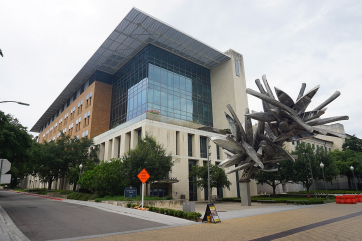Rustam Gilfanov: The Ways the Artificial Intelligence Changes the Work of Medical Organizations
By David Thompson
Photo : Rustam Gilfanov
Modern technologies have a great impact not only on treatment protocols and therapy but on the healthcare system as well.
Today the artificial intelligence (the AI) is actively introduced into almost all areas of the human activity. The medical area is not an exception, and this impact expands year after year. In modern clinics, the AI is not an innovation anymore; it has become a standard technology that drastically changes the work of medical organizations.
The AI and systems used for analyzing big data are implemented predominantly to reduce medical costs and improve healthcare services. For example, it has been assessed and then estimated that in about 15% of cases, medical professionals need to re-examine the patients' data three months after the previous appointment. Health records stored electronically on a cloud are much easier for navigation than paper charts kept in a physical archive.
1. Triage
One of the initial tasks to be urgently resolved when patients are looking for medical help is to as accurately as possible evaluate those who need help now and those who can wait for some time. This sorting procedure is known as triage and is actively supported by AI technologies.
One of such digital triage systems was developed by Babylon Health. It analyzes patients' requests from a call center. According to the results obtained, some patients get recommendations on immediate assistance, and some of them are still advised to find out more about their disease and its symptoms (i.e., such cases are thought to be non-emergent). The UK's NHS has already adopted this service and it already reduces costs on call center wages.
One more example is the joint program for optimizing triage. It is implemented by GE Healthcare and the John Hopkins Hospital. The AI is impressively integrated to triage processes: patients of the emergency department get a bed 38% faster.
2. Replacing paper documents by electronic ones
The healthcare systems of other countries also actively integrate systems that can analyze large amounts of data. South Korea is making the greatest progress in this area: it started digitalizing medical documents as far back as 2003. The first "paperless" medical facility is thought to be Seoul Bundang Hospital. By this year, similar systems have been introduced in more than 90% of national hospitals.
The BEST Care 2.0 system is one of Bundang's most impactful developments: during the first coronavirus wave in March 2020, it accurately and rapidly traced all contacts of infected people, and thus made it possible to avoid a total lockdown.
One more breaking large-scope technology is My HealthWay. This is an app that manages three large databases: medical check-up data taken from national health insurance records, prescription data, and vaccination history. It does not matter which clinic the patient attends, the physician can see their complete medical history by using the app. Moreover, the patient also has a number of advantages, e.g., to check the dates, reasons, and results of previous medical appointments. It is expected that the system should be fully integrated by 2023.
3. Diagnostics
The most promising area of AI and use of the supercomputer in medicine is diagnosing disorders. It is greatly advantageous and promising: electronic devices display higher performance and minimize the occurrence of errors by removing the human factor. More than that, their use is also economically beneficial, because robotic diagnosticians should not be paid, and it is possible to save on wages. At the same time, a lack of human insights can also be a drawback, since AI might not identify a non-typical case that could be diagnosed by an experienced specialist.
Moreover, the trust in machine-made diagnoses is not so high as that in diagnoses given by human doctors. Besides, software costs are still relatively high. Probably, the most famous example of integrating the AI into medicine was IBM's launch of the Watson supercomputer. This is the machine that shows prominent results in other areas, but was rather ineffective when it was used to identify and analyze the data obtained from large cancer care centers in 2015. The objectives Watson was expected to pursue happened to be too difficult for the supercomputer.
In spite of that, this launch was still a landmark event: without IBM's story, any diagnostic and analytical systems developed later would have probably been a failure. At the same time wrong diagnoses are an important issue. According to experts at the John Hopkins University School of Medicine, 10% of patients suffering from cancer, cardiovascular disorders, or infections get misdiagnosed. In its turn this causes wrong treatment and health complications in the future. In case of infections, most faults are related to rare disorders, but incorrect diagnoses occur more rapidly when it comes to various types of cancer.
Zebra Мedical, an AI startup based in Israel, has developed one of the most efficient diagnostic solutions. Now it is actively used by medics in some countries for analyzing CT scans and spot lung, liver, or breast cancer. For the purpose of optimizing operational costs and the workflow, Zebra suggested hospitals to move all algorithms to the cloud instead of paying for hosting their servers. If done so, only $1 will be charged to make and analyze a scan.
4. Individual treatment
The tendency of making treatment more individual and personalized started taking shape just several years ago. However, today, it seems obvious there is no generalized therapy that would fit everyone.
AI boosts the accuracy and efficiency of medical prescriptions, as well as it optimizes surgical treatment. For example, Accuray's CyberKnife makes surgeries more precise: this AI-based system makes an analysis of the patient's body specifics and the tumor location for making surgical interventions less traumatic.
Vicarious Surgical designed another useful instrument that combines the benefits of AI, virtual reality, and robotic surgery and makes it possible to perform the least invasive surgeries.
5. Optimizing hospital work
Any medical facility is a quite complex mechanism that includes doctors, nurses, and many other members of personnel who contribute to its operations. Its sustainable functioning is the prerequisite for quick and accurate medical assistance.
AKASA is one of the most wide-spread AI- and ML-based systems that are used in the US. It has already been integrated into hundreds of hospitals all over the country. It can be set to meet the needs and requirements of a certain medical facility. For instance, the system assists in automating claim management, reduces the time for processing a claim from seven minutes to one and increases the number of processed claims. The medical personnel do not have to waste their time on paperwork and can concentrate on patients and their problems.
One more aspect involves wielding AI capabilities for routing patients and tracking the position of every member of the hospital staff. This is especially relevant for most of medical facilities. A lot of clinics already use indoor navigation apps to set an optimal route for patients to the office they are going to visit. This prevents such situations when patients get lost in a hospital building, come late for their appointment - over 85% of patients have to ask staff members or other patients for directions.
Yongin Severance Hospital shows a good example of using multiple innovative technologies, and AI is among them. It provides 5G coverage and enables students or interns to watch real-time streams of complex surgeries in their classroom or a video hall without the effect of signal jams or image quality drops.
The in-house monitoring system makes it possible to learn at any moment where an employee is situated, which procedures a patient has undergone, and the results of latest check-ups or tests. This principle is applied both to the people and medical equipment, e.g., ultrasound scanners. The monitoring system makes it possible to avoid extra movements (no need to spend time searching for something or someone) and decreases the number of human interactions. This is an essential factor during the ongoing coronavirus spread. Hospital patients can enjoy an advantage of other bonuses, too: apart from high quality treatment, they can also make use of a "virtual visit system" that helps to communicate with relatives even if they cannot pay a visit in person.
6. Clinical trials
Another area of applying AI is clinical trials. Here machines perform tasks like looking for new drugs, re-profiling existing ones, and detecting patients matching the trial criteria.
For example, scientists at Mount Sinai Medical Center made an AI-assisted topological data analysis that studied medical records and genotype information of those patients who suffered from type 2 diabetes, then divided them into three subtypes, and predicted the response of each subtype to the medicine during the trials.
One more technology that impresses was developed by the OPYL startup. It makes an analysis of the content created on social media to detect users with an increased risk of neurodegenerative disorders, e.g., Alzheimer's.
In spite of the fact that human specialists still have the final word on those issues, the latest technologies can process as much data as possible and guarantee that no relevant piece of evidence will get lost.
Rustam Gilfanov, a philanthropist, a private investor, and a venture partner of the LongeVC fund.
* This is a contributed article and this content does not necessarily represent the views of universityherald.com









